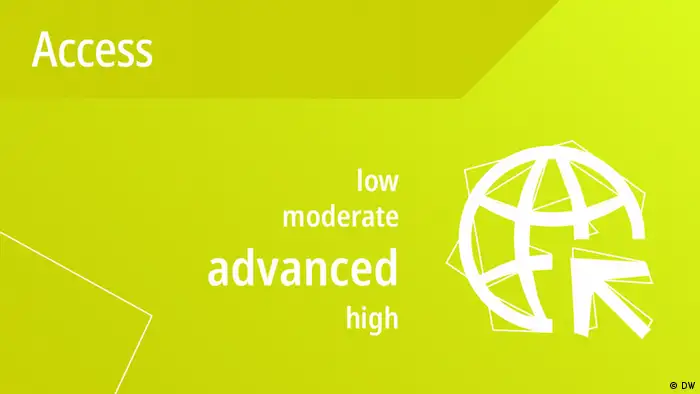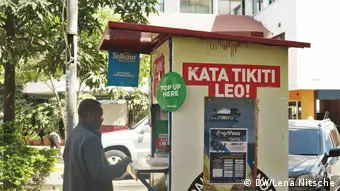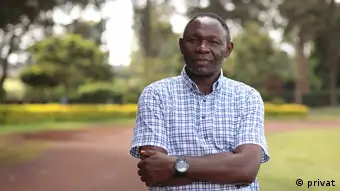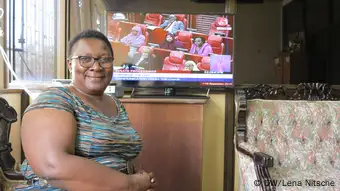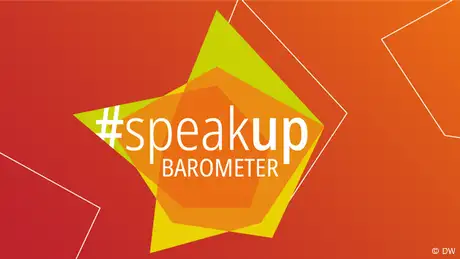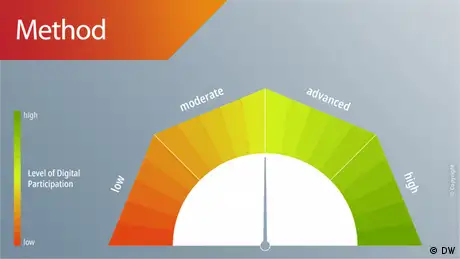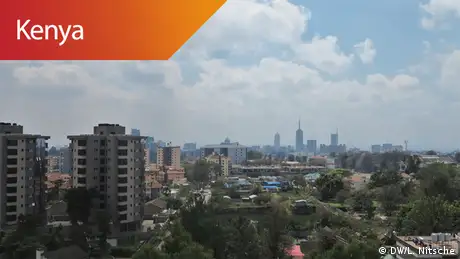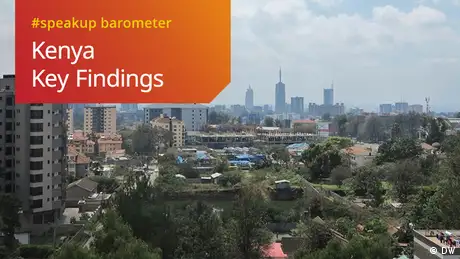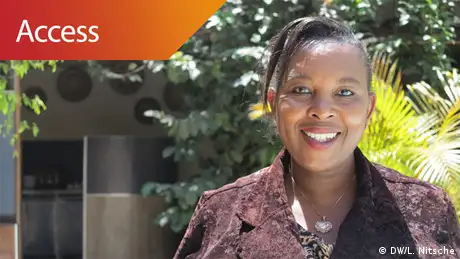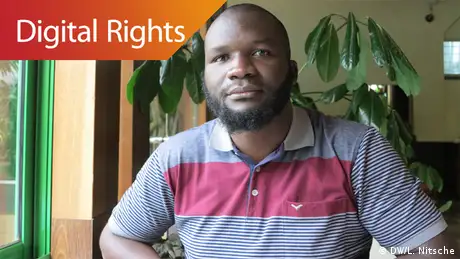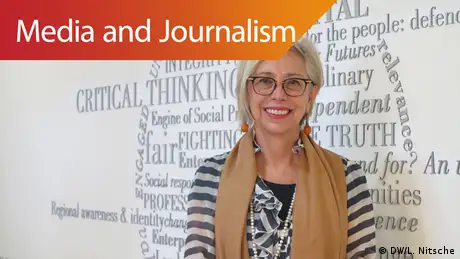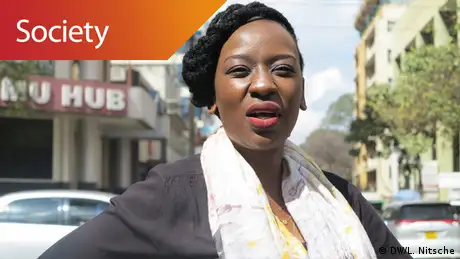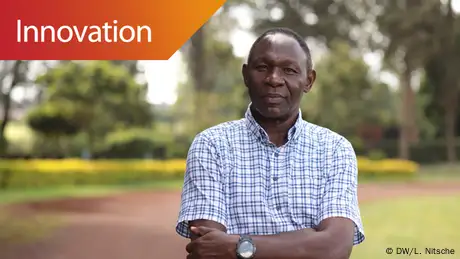#speakup barometer | Kenya
Mobile solutions a catalyst for Internet penetration in Kenya
As one of the most wired nations in Africa, Kenyans regard the Internet as a cause for celebration. But a look beyond the statistics reveals that many Kenyans are left out of the party.
Key Findings
— Kenya is one of the most wired nations in Africa
— Mobile money and social media apps are driving mobile adoption
— Internet infrastructure has been a government priority for the last decade
— Internet access does not always lead to economic empowerment
— New infrastructure projects aims to close the digital divide
At first sight, Kenya is an Internet access success story. The statistics underline Kenya’s reputation as one of Africa’s most wired nations. Internet subscription rates grew from 29.6 percent in June 2017 to 41.1 percent the following year, according to the National Bureau of Statistics. The price is coming down too. In 2015, 1GB of mobile data cost the equivalent of almost ten percent of GNI per capita, three years later and it's worth 4 percent. Affordability has helped turbo-charge the demand for Internet on the go. The rising popularity of mobile services such as social media, messaging apps, and electronic cash transfers has driven demand for mobile subscriptions, resulting in a mobile penetration rate of 97.8 percent as of June 2018 — a 13 percent year-on-year increase. Kenya also has one of the fastest Internet speeds worldwide. Internet researcher Margaret Nymabura says that the mobile money service M-Pesa was the catalyst, making urban and rural Kenyans excited about the possibilities of the Internet. “People want to be connected to M-Pesa, which probably means you need to invest in a phone. And in the process, other things come in,” she said.
Over the last decade the government has invested in ICT and Internet infrastructure development. In 2009, Kenya was the first country in East Africa to connect to international fiber optic, with cables being installed in Mombasa at the Kenyan coast linking the country to international fiber networks. Bitange Ndemo, then permanent secretary in the Ministry of Information and Communication says “at the same time, we didn't just connect Kenya with the international cable, but we laid the cable across the country linking every county to the cable. That differentiates Kenya from other African countries”. At first, this project was regarded with skepticism due to fears
that the capacity delivered by the cables far outstripped demand for Internet connectivity. But the government also introduced policies to encourage Internet adoption, such as connecting universities to the cables as well as the introduction of tax exemptions for mobile devices in 2009, leading to a 200 percent growth in mobile devices in Kenya.
Penetration not the same as adoption
Internet statistics, however promising they look, might not reflect the reality. “If you look at the statistics, Internet penetration might be high in Kenya. But penetration is different from adoption,” says Josephine Miliza, a network engineer with the Tunapanda Institute. The lack of Internet infrastructure and electricity supply as well as affordability are issues that impact the digital divide between Kenya’s urban and rural areas. Maureen Moraa of the Tunapanda Institute says that access to smartphones alone won’t empower those people who are not yet part of Kenya’s digital economy. “If you want to learn about design and programming, you can’t do it on your phone. You need access to laptops and desktop computers,” Moraa says, adding that the use of desktop computers in Kenya is not all that widespread. According to the National ICT survey, computer use is at around 31 percent within Nairobi and between 5 and 10 percent in other parts of Kenya.
But economic and social empowerment through ICTs is not only a matter of the device you use, but also your gender. Chery Yugi from Article 19 says that although her grandmother living in a rural village knows about M-Pesa and WhatsApp that doesn’t necessarily mean she is “empowered”. “When it comes to Internet tools that aim to enhance democracy and participation, women in villages do not have a voice. They are not literate in that aspect, and this is something that affects women twice as much as men,” Yugi said.
Government initiatives and private companies are moving to tackle the digital divide. Kenya’s Vision 2030 Medium Term plan lists ICT and Internet as one of their top priorities. A Universal Services Fund is driving the infrastructure expansion in rural areas, and Huduma centers provide Internet access and e-government services in every county. In early 2019, telecommunications firms Safaricom and Telkom won contracts to set up base transceiver stations in remote locations still not connected to mobile networks. Recent changes, however, may undermine government support for Internet penetration. “This year, the government started to tax money transfers, and the majority of money transfers are done by the very poor,” explained Nairobi University Professor Bitange Ndemo.
What experts say
Bitange Ndemo, professor at Nairobi University, on the importance of Kenya’s homegrown mobile innovations:
“Today, Kenya’s smartphone penetration is really high because of the availability of mobile solutions that solve real problems.”
Maureen Mora from Tunapanda Institute on the need for more economic empowerment through the Internet:
“The younger ones are on Facebook and YouTube, the older ones are catching up on WhatsApp. But we need to get to a point where we are moving from entertainment to economic empowerment through the Internet.”
Rachel Nakitare from the Kenyan Broadcasting Corporation:
"You can encourage people to come only by showing them how their needs are met. For example, the e-government services might be a trigger. They will start seeing the value — and the value needs to be bigger than the costs.”
Recommendations
— Relevance and motivation
Almost 80 percent of Internet content is in English, even though many Kenyans are unable or are not confident to read and write in English. Maureen Moraa and Josephine Miliza from Tunapanda Institute argue that empowering communities to produce their own content in their own language is one way of increasing the relevance of the Internet to them. A strong demand for Internet services will be a key driver for infrastructure development.
— Digital literacy for everyone
There is a need for improved literacy regarding usage and understanding of the Internet. Margaret Nyambura adds that this needs to involve every member of society: “We are connecting the kids — but what about their parents? Are they going to encourage or discourage the kids to use the Internet?”
— Public Internet access
Free public Internet access through Internet cafés or public WiFi in rural areas needs to be enhanced. “Rural folks should not be left behind. There should be a clear mapping to find the remotest of the remote. And there needs to be more places in those areas where Internet can be offered, such as in a rural hospital,” says Margaret Nyambura.
The #speakup barometer is a DW Akademie project that examines the connection between digital participation, freedom of expression and access to information. Learn more at www.dw.com/barometer
DW recommends
WWW links
- Date 17.01.2019
- Author Lena Nitsche
- Feedback: Send us your feedback.
- Print Print this page
- Permalink https://p.dw.com/p/3BXBu
- Date 17.01.2019
- Author Lena Nitsche
- Send us your feedback.
- Print Print this page
- Permalink https://p.dw.com/p/3BXBu

